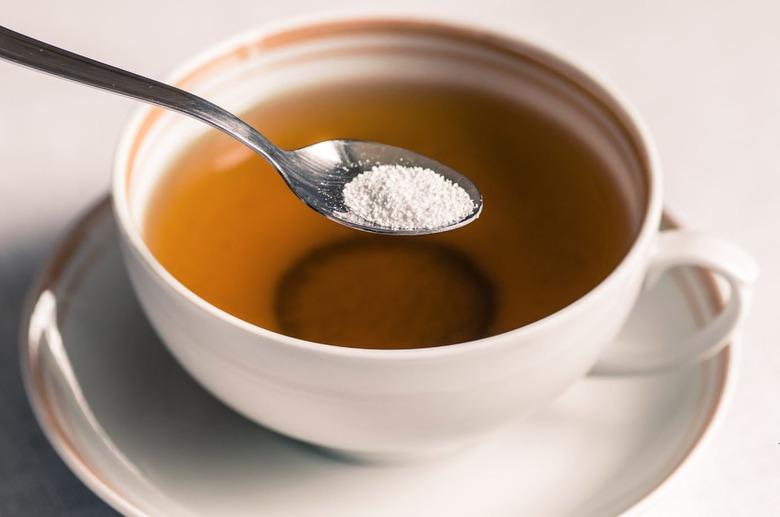4 Really Bizarre Facts About Splenda
We bet that there are only a few things you know about Splenda. One, it's an artificial sweetener like Equal and NutraSweet. Two, it "tastes like sugar, because it's made from sugar," as the commercials promote. And three, if you've looked closely at a packet, it's a "zero-calorie" sweetener. Well, there's a lot more to Splenda than meets the eye. Here are four facts about the sweetener that may surprise you.
Sucralose Is Made by Chlorinating Sugar
Sucralose, Splenda's main selling point, is manufactured by an incredibly complex process, but the product's website describes it as follows: "The process selectively replaces three hydrogen-oxygen groups on the sugar molecule with three chlorine atoms." The resulting molecule, sucralose, is synthetic and unrecognized by the body, so it passes through the body with only a very small amount being absorbed, supposedly.
It Actually Contains Very Little Sucralose
Splenda is only about 5 percent sucralose. The remaining 95 percent is maltodextrin (a "bulking agent" that's essentially just filler) and sugar, specifically corn-based dextrose.
It's Not Calorie-Free
Sure, straight sucralose may be calorie-free, but sugar certainly isn't. If sugar contains calories, and Splenda contains sugar, how can the company get away with saying its product is calorie-free? Because each packet contains fewer than five calories (3.36, to be exact), so the Food and Drug Administration allows the company to claim that it's "calorie-free." Because the actual amount of sugar in each packet is so small, it doesn't affect blood sugar.
Sucralose is 600 Times Sweeter Than Sugar
Only 70 milligrams of sucralose is required to sweeten the equivalent of a 12-ounce can of diet soda.
